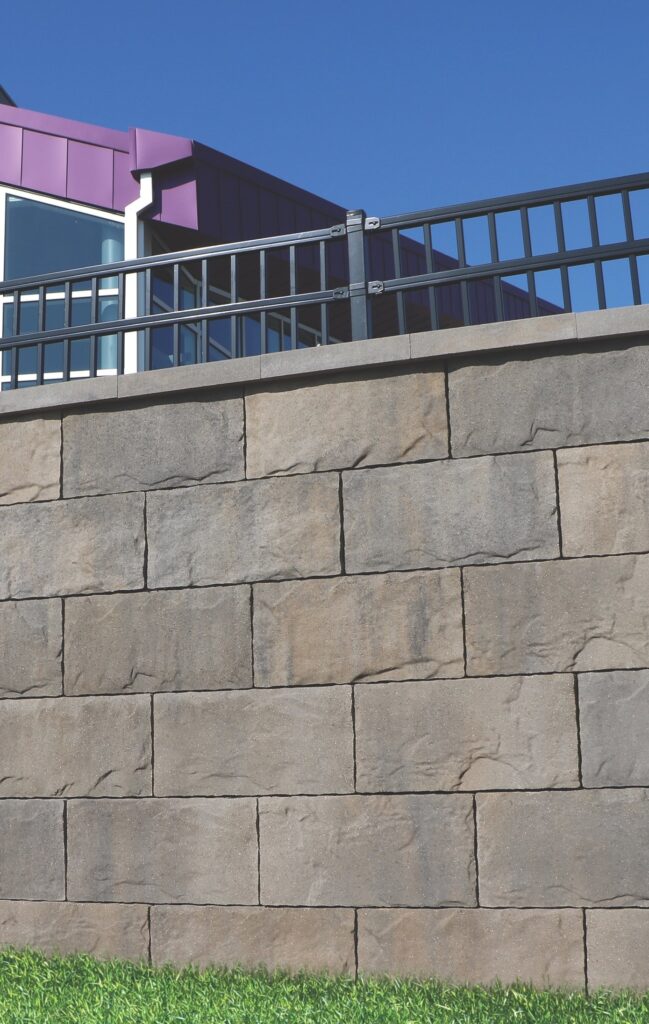Poured Concrete Retaining Walls
Request A Free Quote!
Poured Concrete Retaining Walls
Prized for their strength and versatility, concrete retaining walls require precise construction methods. With this high level of technicality comes incredible versatility. Poured concrete retaining walls can be colored, textured, accented with embedded objects and much more. When installed properly, concrete offers much more room for customization than any other retaining wall material.
If the wall exceeds four feet in height, footings should be poured separately.
- Allow concrete to cure.
- Create contraction joints every 4-6 feet. (see below for more information on contraction joints)
- Remove forms and install waterproofing and drainage system.
- Finish the surface of the wall as desired.
- Install patios, steps and other hardscape elements.
Undoubtedly, poured concrete walls are a lot stronger than cinder block walls. They don’t have joints like the ones found between blocks. The only joint found in poured concrete basements is the cove joint. This is where the floor meets the wall, and the wall sits on top of the footing.

Poured concrete walls have excellent resistance to underground lateral pressure imposed by the soil and water. It is the reason why engineers and architects are turning towards them in increasing numbers. A poured wall does not feature joints like in a cinder block wall, and it is less prone to leak years after construction. There will be resistance against premature leaking or cracks. During the construction phase, poured walls can pour onto any foundation. If uncertainty abounds during construction, it is the preferred method for last-minute changes. Poured concrete walls are not restricted to the same limitations as cinder blocks. Concrete can pour into any shape and size.
On the downside, poured cement walls can be more expensive than block walls when cement prep and production are far from the site. It is something to consider when building a home from scratch. Otherwise, poured cement is perfect for every type of foundation. When you build a new home, your main priority should be to create the strongest and safest foundation possible. Poured concrete walls have become the first choice of homeowners and builders. They are easy to construct and durable. They save you from issues like premature water leakage and frequent repairs.
They Offer High Strength:
Poured concrete walls are hard to beat when it comes to their strength. They are super durable and offer a higher amount of flexural and compressive strength than block walls.
They Are More Resistant to Lateral Water Pressure:
It is imperative to construct a strong structure that offers as much water resistance as possible. No matter how bad the climate gets. Poured concrete walls are free from joints and are much denser than the cinder block foundation walls. They will not give in as quickly to buckling or bowing.
They Are Fire Resistant:
Poured concrete walls have the highest fire safety rating when compared to cinder blocks.
They Offer Design Flexibility:
Poured concrete walls offer more design flexibility for builders. They can opt for a change at the last moment regardless of the foundation type. Builders start with a liquid form; build a mold into any shape and design. This is hard to achieve with cinder block walls.
They Are Low Maintenance:
Poured concrete walls are lower maintenance. They have fewer joints, better at withstanding lateral pressure, and fire-resistant. It is possible to have no signs of cracks or water leaks in the first 5 to 10 years with exterior waterproofing. Stronger still, poured concrete offer superior support. Best of all, you can stamp or stain the concrete to create custom patterns.
Frequently Asked Questions
Poured Concrete Retaining Wall FAQs
A poured concrete wall averages $6,916 for homeowners around the country, with most people paying between $2,776 and $11,726. You might pay anywhere from $932 to $25,000 depending on the size, materials, design and overall labor
